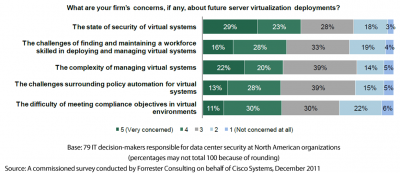As the year comes to a close, it’s the perfect time to reflect on the topics that resonated most with our readers. From enhancing cybersecurity defenses to solving network compatibility challenges, 2024 has been a year of growth and innovation. To wrap things up, we’ve rounded up five of some of our most popular blog posts.
Continue reading2024 Year in Review
As 2024 comes to a close, we’re reflecting on the crucial role of precise timing in modern systems and operations. This year, we’ve explored how accurate time synchronization drives efficiency, reliability, and security across networks and infrastructure. To wrap up the year, we’ve rounded up five key blog posts that highlight the importance of precise timing & synchronization and how our solutions can help your organization stay aligned, resilient, and future-ready.
Dive in and see how mastering timing can set you up for success in 2025 and beyond!
5. Synchronized Clocks – What System is Best for my Organization
Choosing the right synchronized clock system is crucial for maintaining accuracy and efficiency across your organization. In our latest blog, we explore different options and guide you through selecting the system that best fits your operational needs and infrastructure.
4. Precision time protocol built for Zero Trust Architecture
Discover how the Precision Time Protocol (PTP) can seamlessly integrate with a zero-trust architecture. Our latest blog explains how PTP ensures accurate time synchronization while maintaining the highest levels of security across your network.
3. Hoptroff Time Sync for Power Substations
Learn how Hoptroff time synchronization solutions are transforming reliability and accuracy in power substations. Our latest blog explores the benefits of seamless integration and precise timing for enhanced operational performance.
2. Synchronized Digital Clocks: Advantages and Considerations
Discover the advantages and key considerations of using synchronized digital clocks in your organization. Our latest blog outlines how precise timing improves efficiency, coordination, and reliability across various systems and operations.
Learn how synchronizing time in a System of Systems (SoS) enhances efficiency and reliability in the process control industry. Our latest blog explores strategies for seamless time integration across complex operations.
Happy Holidays from Telnet Networks
Stay Ahead of Network Challenges with Automated NCCM and Netconf/YANG
In today’s rapidly evolving digital landscape, efficient network management is crucial for maintaining seamless operations and ensuring optimal performance. Automated Network Configuration and Change Management (NCCM) has emerged as a vital component in this domain, streamlining processes and minimizing human errors.
Central to the advancement of automated NCCM are Netconf and YANG, which offer standardized, secure, and scalable solutions for network configuration. Infosim’s StableNet® leverages these technologies to enhance the NCCM experience, providing a comprehensive platform for network management.
Understanding Netconf and YANG
Netconf is a protocol designed to manage and configure network devices securely. It utilizes XML and RPCs to facilitate communication between clients and servers, enabling efficient configuration management. YANG, is a data modeling language that defines the structure of network device configurations in a clear, machine-readable format. Together they address the limitations of traditional methods like Command Line Interface and SNMP, offering a more robust and standardized approach to network configuration.
The Value of Netconf and YANG in Automated NCCM
The integration of Netconf and YANG into automated NCCM systems offers several key advantages:
- Standardization: As IETF-developed technologies, Netconf and YANG provide a universal standard for network configuration, ensuring interoperability across multi-vendor environments and preparing networks for future advancements.
- Enhanced Security: Netconf ensures secure authentication and encryption through protocols like SSH and TLS, protecting configurations from unauthorized access and potential security breaches.
- Transactional Configurations: Netconf’s transactional approach allows for bundling configurations together, enabling complete rollbacks in case of errors. This minimizes risks associated with manual configuration changes and enhances overall network reliability.
- Automation-Friendly: The machine-readable nature of YANG models facilitates seamless integration into automation platforms, reducing manual intervention and the likelihood of human errors.

Infosim StableNet®: Harnessing Netconf and YANG for Enhanced NCCM
Infosim’s StableNet® effectively incorporates Netconf and YANG to improve the NCCM experience. By leveraging these technologies, StableNet® offers a range of features designed to streamline network configuration and change management:
- Comprehensive Configuration Management: StableNet® provides complete configuration backup and restoration capabilities for all devices under management, ensuring that configurations are consistently maintained and easily recoverable in case of issues.
- Automated Task Execution: The platform automates complex tasks into simple templates, accelerating the completion of changes and rollouts. This automation reduces the time and effort required for network management, allowing IT teams to focus on strategic initiatives.
- Policy and Compliance Enforcement: StableNet® enforces corporate policies and quickly identifies configuration deviations from established standards, ensuring compliance with regulatory requirements and internal guidelines.
- Vulnerability Management: The solution identifies devices with known vulnerabilities within the network, enabling proactive mitigation of risks and enhancing overall network security.
- End-of-Life/End-of-Service Management: StableNet® proactively identifies devices that have reached End-of-Life (EoL) or End-of-Service (EoS) status, facilitating timely upgrades or replacements to maintain network integrity.
Reach out to Telnet Networks to learn more about how StableNet® can streamline network operations, reduce the risk of human errors, and ensure networks are prepared for future challenges.
WiFi 7: Revolutionary Capabilities & Unique Testing Challenges
With Wi-Fi 7 set to transform wireless networking, the way we test these networks must also evolve. Wi-Fi 7 introduces blazing speeds up to 46 Gbps, Multi-Link Operation (MLO) for simultaneous multi-band connections, 320 MHz channels, and 4096-QAM for higher data rates. These breakthroughs are aimed at enhancing throughput, reducing latency, and optimizing network efficiency, but they also bring unprecedented testing challenges.
Key Testing Challenges for Wi-Fi 7:
- High-Density Environments: Wi-Fi 7 is built to thrive in environments with numerous devices, but testing must ensure it delivers optimal performance under heavy load and interference.
- Ultra-Low Latency: Wi-Fi 7’s improvements in latency are crucial for applications like AR/VR and real-time communications. Testing must assess its ability to deliver low-latency performance consistently.
- Validation of 320 MHz Channel Bandwidth: The expansion to 320 MHz channels necessitates testing equipment capable of handling such wide bandwidths. Ensuring signal integrity and minimal interference across this spectrum is crucial for achieving the promised data rates.
- 4096-QAM Modulation Accuracy: The adoption of 4096-QAM increases data throughput but requires highly accurate signal generation and analysis due to its susceptibility to noise and distortion. Testing must ensure that devices can maintain high modulation accuracy under varying conditions.
- Multi-Link Operation (MLO) Performance: MLO allows devices to operate simultaneously across multiple frequency bands, enhancing throughput and reliability. Testing MLO involves evaluating coordination between links, managing potential interference, and ensuring seamless data flow.
- Enhanced MIMO Capabilities: Wi-Fi 7 supports up to 16 spatial streams, necessitating rigorous testing of MIMO (Multiple Input Multiple Output) configurations to verify that devices can effectively manage multiple data streams without performance degradation.
- Preamble Puncturing and Spectrum Utilization: The introduction of preamble puncturing allows devices to utilize spectrum more efficiently by avoiding interference. Testing must ensure that devices can dynamically adjust and puncture portions of the spectrum without impacting overall performance.
To address these novel challenges, leading test and measurement companies like Candela Technologies are pioneering the next generation of Wi-Fi 7 testing solutions such as:
- Advanced Signal Generation and Analysis: Utilizing high-performance vector signal generators and analyzers capable of handling 320 MHz bandwidth and 4096-QAM modulation ensures accurate testing of Wi-Fi 7 signals. Candela’s test systems can validate devices achieving on-air encoding rates near 5 Gbps for 2×2 configurations and throughput exceeding 8.3 Gbps in 4×4 test configurations.
- Comprehensive MLO Testing Frameworks: Developing specialized test setups that emulate multiple links across different bands allows for thorough evaluation of MLO performance, ensuring devices can manage multi-link operations effectively.
- Enhanced MIMO Testing Solutions: Implementing sophisticated MIMO testing platforms that can simulate up to 16 spatial streams enables validation of devices’ capabilities to handle complex MIMO configurations.
- Dynamic Spectrum Utilization Testing: Creating test scenarios that assess devices’ ability to perform preamble puncturing and adapt to changing spectrum conditions ensures efficient spectrum utilization without performance loss.
With tools designed for advanced multi-band and high-throughput environments, Candela ensures seamless performance under real-world conditions. Candela’s platform enables precise testing of latency-sensitive applications, congestion management, and multi-device performance, ensuring your network is ready for Wi-Fi 7’s full potential.
For customers with unique testing needs, Candela offers Test as a Service (TaaS), where their engineers conduct testing in a fully equipped lab and provide detailed reports with recommendations.
Synchronized Clocks – What System is Best for my Organization
Virtually every enterprise can benefit from synchronized time displays, clocks that all display the same correct time. But which system is best for your organization?
There are many options to pick from, depending on your industry and the number of displays required, but which system is best for your organization?
Large Environments
Small Environment/Office
For smaller facilities such as a small office, medical clinics, an investment in a master controller may not be warranted. In that case, Power over Ethernet (PoE) or Wi-Fi Network Clocks may be a better option.These clocks can connect to your master clock, or any other NTP time source, within your environment to ensure they all display the same time.
Upgrading an existing system
Many education facilities have pre-existing Sync-Wire clock systems. Some of the clocks may be failing, or the clock controller is not functioning correctly.For this we have a couple of options.
Sapling clocks are compatible with most name brand controllers, which allows you to directly replace your clocks. One of the disadvantages of a sync-wire system is the frequency of the time sync which is once every 12 hours. This means that in the event of a power outage or when adding or replacing clocks, it could take up to 12 hours for the clocks to display the correct time.
If your clock controller is failing or you would like to upgrade, you can install a hybrid master clock with a wireless transmitter that also supports your existing wired clocks. This is a cost effective option as you can upgrade your wired clocks to the newer wireless clocks as the older clocks fail or budget becomes available.
Clock Selection
Once you’ve selected your clock system, you’ll need to decide between analog and digital displays. Analog clocks may be designed with images or a logo and different sizes which makes them a good fit for waiting areas or other customer facing locations, whereas the brightness of digital clocks is helpful in places with low light areas.
Digital clocks can also come with enhanced functionality, such as an elapsed-timer that allows you to track how much time has gone by during a specific task. This can prove useful for meetings, timing events or time sensitive events like code blue in a hospital environment.
Clocks that Keep Everyone Safe and Informed
Your synchronized digital clocks can now do so much more, by bringing visual notifications to your facility especially in busy noisy environments. The OnAlert system is an advanced, powerful communication platform that during normal operation can present time of day but can be switched to a high priority message which replaces all other messages during times of crisis.
Considering your options contact us to discuss which is best for you
Why Legally Traceable Time is Crucial for Modern Business and Technology
In today’s connected world, precise and legally traceable time is crucial across industries like telecommunications, finance, aerospace, and cybersecurity. Legally traceable time ensures accurate, verifiable, and defensible time records, vital for compliance, security, and efficiency.
Companies like Safran and Hoptroff lead in high-precision time synchronization. Legally traceable time refers to data that is not only accurate but also sourced from trusted, verifiable systems, often synced to Universal Coordinated Time (UTC). This creates an auditable time trail, ensuring that timestamps on critical data are legally valid.
Both Safran and Hoptroff use advanced techniques, such as Global Navigation Satellite Systems (GNSS), atomic clocks, and network time protocols (NTP), to provide time solutions that meet rigorous standards. These technologies guarantee that systems remain synchronized and that time records are verifiable and legally defensible if needed.
The Importance of Legally Traceable Time
1. Regulatory Compliance
Industries like finance, healthcare, and telecommunications require precise time stamping for regulatory compliance. For example, the financial sector depends on accurate timestamps for trade logs to meet regulations like MiFID II. Any time discrepancies can lead to legal disputes, fines, or fraud accusations, making legally traceable time essential for meeting these obligations.
2. Fraud Prevention
Tracing and verifying transaction times is crucial in combating fraud. Legally traceable time helps organizations establish an irrefutable timeline, whether for bank transactions or security breaches, aiding in detecting discrepancies and preventing malicious activities.
3. Security and Forensics
In cybersecurity, precise timing is crucial for investigating breaches and gathering forensic evidence. Accurate timestamps help forensic teams reconstruct attacks and identify perpetrators. Solutions like Hoptroff’s time synchronization make it easier to align network logs with legally traceable time.
As industries rely more on interconnected technologies, the need for legally traceable time is crucial. Solutions from leaders like Safran and Hoptroff ensure time data is accurate and legally defensible. A verifiable, synchronized time trail is essential for compliance, fraud prevention, security, and operational success in today’s fast-paced world. Time is a fundamental asset that demands precision and reliability.
4. Legal and Regulatory Compliance in Pharmaceuticals
Pharmaceutical companies must adhere to POL-0140 part 6.2, which requires that electronic records and signatures include precise, legally traceable timestamps to ensure compliance. This regulation is essential for verifying that each step of the drug manufacturing process occurs in the correct sequence, maintaining the integrity and authenticity of electronic records. Furthermore, it provides an auditable trail that facilitates inspections and regulatory reviews, ensuring accountability and adherence to strict quality and safety standards.
5. Financial Transactions and Stock Trading
High-frequency trading (HFT) platforms execute thousands of trades per second, where microsecond differences can lead to substantial financial impacts. To ensure fairness and prevent market manipulation, regulators like the SEC in the U.S. and MiFID II in the EU mandate legally traceable timestamps for every transaction. These timestamps provide proof of the order and timing of transactions, supporting forensic analysis in cases of disputes or regulatory investigations, thereby promoting transparency and accountability in financial markets.
6. Industrial Control Systems (ICS) & Utilities
Electrical substations rely on time-sensitive protocols such as GOOSE (Generic Object-Oriented Substation Event) for protection and control, necessitating precise and legally traceable timestamps to log critical events like circuit breaker trips, power fluctuations, and outages. Accurate event sequencing is essential for root cause analysis, compliance with industry standards such as IEC 61850 and regulatory frameworks like NERC CIP, and for validating performance and reliability during audits, ensuring operational integrity and regulatory adherence.
7. Healthcare and Medical Records
Hospitals use electronic health record (EHR) systems to log patient data, medication administration, and medical device readings, where precise and traceable timestamps are vital. Accurate timing ensures records are in the correct sequence, preventing errors like missed doses or duplicate treatments, and supports patient safety. It also maintains record integrity, provides an auditable trail for procedures, ensures PIPEDA compliance, and aids in resolving legal and insurance claims by demonstrating proper care and accountability.
The power of TAPs in OT Networks
Monitoring hub-based Operational Technology (OT) networks is crucial for industries relying on automation and real-time control. Hub-based networks, often used in OT environments, require specialized monitoring tools to ensure uninterrupted operations without compromising performance or security.
Profitap‘s solutions, particularly its Copper TAPs and IOTA devices, offer non-intrusive traffic capture and analysis. TAPs are physically placed between network devices, capturing all data packets as they pass through the network, ensuring that engineers have full visibility into the flow of traffic. This helps identify issues like packet loss, data transmission delays, or configuration errors that could affect overall system performance. Copper TAPs intercept network traffic without introducing latency, making them ideal for OT environments where timing is critical.
By capturing traffic separately in both directions, these TAPs help engineers focus on monitoring critical data flows, enhancing the efficiency of diagnostics and troubleshooting.
orkIn addition to enabling real-time traffic monitoring, Copper TAPs improve the efficiency of troubleshooting. OT networks often consist of various interconnected devices, each performing specific tasks. Diagnosing issues in such complex systems can be challenging without the right tools. By deploying TAPs at strategic points in the network (such as after a Programmable Logic Controller (PLC) or at network branch points), operators can isolate specific traffic streams for analysis. This targeted approach allows for quicker identification of configuration issues or security vulnerabilities, reducing downtime and ensuring operational continuity.
Additionally, Copper TAPs ensure that traffic is captured passively, meaning they do not interfere with network operations. This is particularly important in OT environments, where even small disruptions can lead to costly production delays or safety risks. The invisibility of TAPs within the network means they can be integrated seamlessly into both existing and new infrastructure.
When combined with IOTA devices, which offer advanced traffic analysis capabilities, TAPs enhance the power of network monitoring. IOTA allows for the simultaneous capture and analysis of traffic from multiple TAPs, providing engineers with comprehensive insights into network health, configuration accuracy, and timing issues. This comprehensive analysis is key to maintaining optimal performance in time-sensitive OT environments, where every millisecond counts.
Copper TAPs bring significant value to hub-based OT networks by providing non-intrusive, real-time traffic visibility. By supporting real-time diagnostics and ensuring ongoing performance, security, and integrity, Copper TAPs play a crucial role in maintaining the reliability of vital OT systems.















